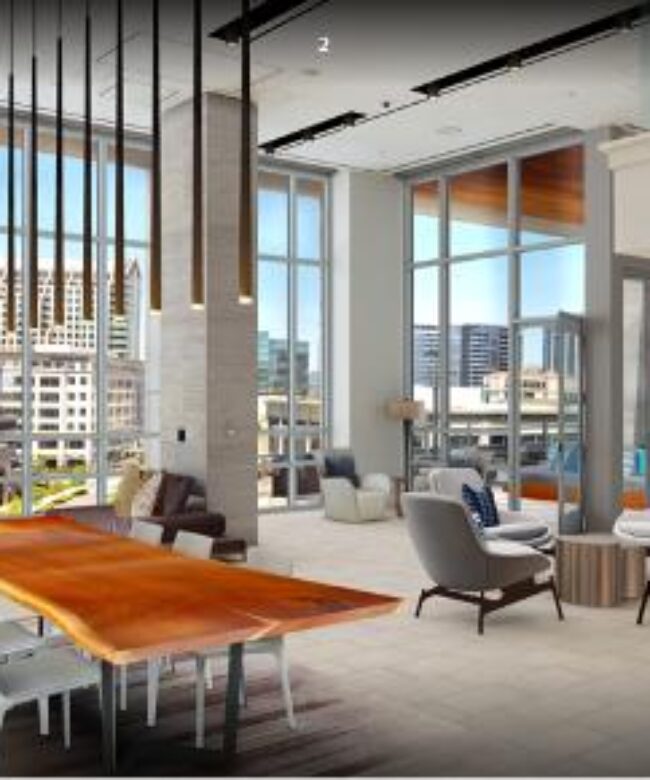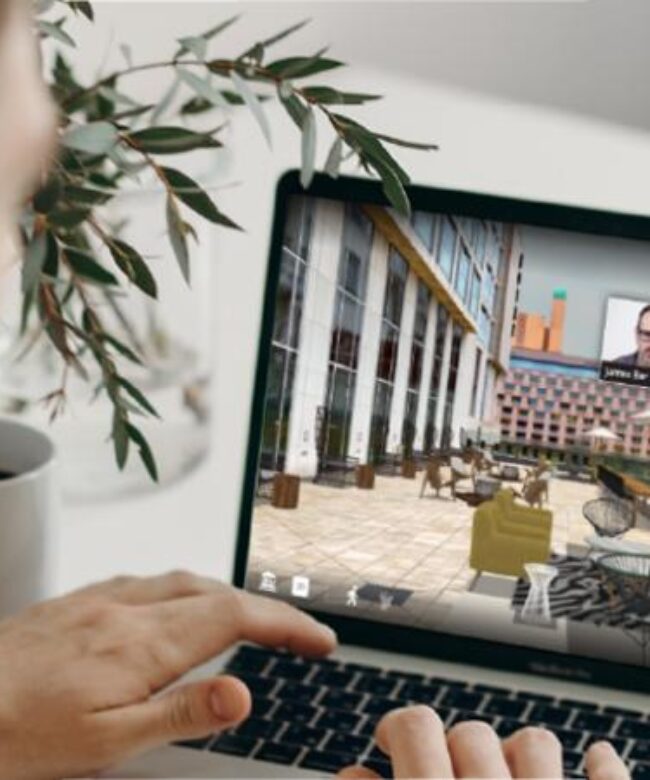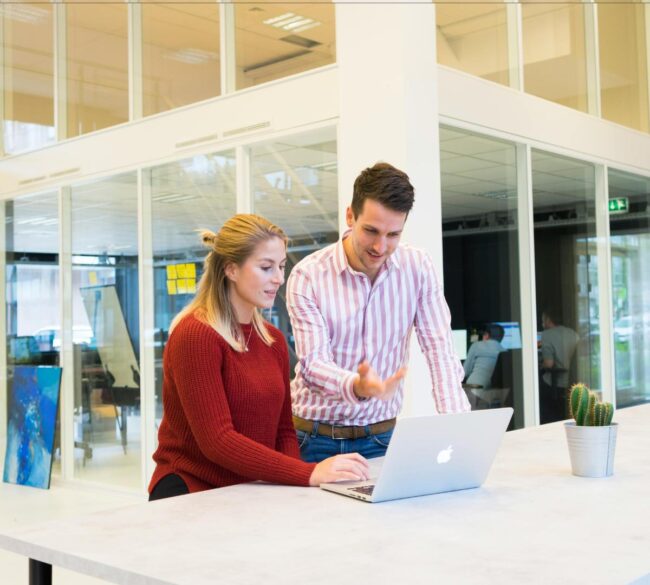Looks like you’re on the US site. Choose another location to see content specific to your location
Inclusive Event Planning: Bridging the Accessibility Gap

In a diverse world, inclusivity has become a vital goal, particularly in event planning. Up to 20% of the population comprises individuals with neurodiversity conditions, often called ‘invisible disabilities’, including ADHD, ASD, dyslexia, and Tourette syndrome. These conditions impact thinking, information processing, and interaction.
Addressing neurodiversity in event planning is essential for fostering an inclusive environment and for acknowledging and valuing the unique perspectives of diverse groups. Many neurodiverse individuals face communication and sensory issues, making participation in large events difficult. However, efforts for positive change are already in progress.
IN THIS ARTICLE:
1. UNDERSTANDING NEURODIVERSITY
2. MAKING THINGS INCLUSIVE: RULES AND EFFORTS
3. EVENT PLANNING: A PARADIGM SHIFT IN ACCESSIBILITY
4. EMPOWERING NEURODIVERSITY: TOOLS FOR INCLUSIVE EVENT PLANNING
5. DESIGNING SPACES FOR ALL: VIRTUAL VISUALIZATION’S IMPACT
6. SHAPING A MORE INCLUSIVE TOMORROW
1. UNDERSTANDING NEURODIVERSITY
Neurodiversity celebrates the diverse ways our brains work, challenging the notion that certain conditions such as autism, ADHD, and dyslexia need fixing. Instead, these conditions are unique variations that enrich humanity. Imagine an event where everyone’s distinct way of thinking is valued; that’s the power of understanding neurodiversity. Structuring event accessibility for neurodiversity involves creating a space where everyone feels included and can contribute their unique insights without worry, leading to remarkable innovations and progress.
There are many conditions that fall under the label of “neurodivergent” including:
- Autism Spectrum Disorder (ASD)
- Attention Deficit Hyperactivity Disorder (ADHD)
- Attention Deficit Disorder (ADD)
- Tourette’s Syndrome
- Pathological Demand Avoidance (PDA)
2. MAKING THINGS INCLUSIVE: RULES AND EFFORTS
Worldwide, governments are enacting regulations to enhance event and venue accessibility, reflecting the rising significance of inclusivity. Diverse sectors and organizations like Google, Microsoft, JPMorgan Chase & Co., and UNICEF are actively championing diversity, equity, and inclusion (DEI) initiatives across industries, fostering inclusive cultures, and addressing issues such as gender, race, and LGBTQ+ rights. These initiatives involve measures like offering inclusive event materials, quiet spaces, and sensory accommodations, collectively contributing to an inclusive event planning culture characterized by equity.
Several key aspects exemplify the efforts being made to improve event accessibility for neurodiverse individuals, pave the way for a more inclusive event industry:
- Legislative Regulations: Many countries have introduced legislation enforcing accessibility standards for public spaces and events, such as wheelchair ramps and tactile signage for the visually impaired.
- DEI Initiatives: Diversity, equity, and inclusion (DEI) initiatives are driving change across industries, including event planning. These initiatives involve providing inclusive materials, sensory accommodations, and fostering understanding and acceptance.
- Quiet Spaces: Many events now include designated quiet spaces where individuals can take a break from the sensory stimuli of a bustling event. These spaces provide a refuge for attendees who may experience sensory overload, enabling them to recharge and fully participate in the event without feeling overwhelmed.
- Sensory Accommodations: Events are implementing sensory accommodations such as noise-canceling headphones, visual schedules, and sensory-friendly seating arrangements. These accommodations cater to the unique needs of individuals with neurodiversity conditions and ensure that they can engage in the event comfortably.
- Inclusive Communication: Event materials, such as signage and presentations, are being designed with inclusive communication principles in mind. This includes using clear and concise language, providing visual cues, and incorporating accessible formats for individuals with diverse communication needs.
- Education and Training: Event organizers and staff are undergoing training to better understand the needs of individuals with neurodiversity conditions. This training equips them with the knowledge and skills to create an inclusive and supportive environment for all attendees.
- Collaboration with Advocacy Groups: Event planners are partnering with advocacy groups that specialize in neurodiversity to gain insights and guidance on creating accessible events. These collaborations ensure that teams planning sensory-safe events do so with the input and expertise of those directly impacted by neurodiversity conditions.
- Accessible Technology: Leveraging technology, such as closed captioning for presentations, live interpretation services, and interactive event apps with accessibility features, enhances the overall event experience for all attendees. These technologies are vital for an event planning team looking to host inclusive events in which all attendees can participate fully.
3. EVENT PLANNING: A PARADIGM SHIFT IN ACCESSIBILITY
The field of event planning has experienced a profound transformation in recent years regarding accessibility. As societies embrace inclusivity and diversity, there’s growing recognition of the importance of making events accessible to all, irrespective of physical abilities, cognitive differences, or sensory preferences. This shift marks a significant departure from traditional event planning and has brought about a paradigm shift in the industry.
This paradigm shift encompasses various key aspects of event planning:
- Inclusive Design: Accessibility in event planning extends beyond legal compliance. It entails considering diverse participant needs upfront, including physical access, sensory sensitivities, and dietary restrictions, aiming for active and comfortable engagement.
- Digital Accessibility: Technology’s rise introduces event accessibility through virtual tours, online events, and webinars, yet digital challenges like compatibility with screen readers, video captions, and alternative content formats for people with disabilities arise.
- Venue Selection: Venue choices prioritize accessibility features like ramps, elevators, and wheelchair-friendly seating, considering surrounding factors such as public transportation and nearby accommodations for diverse needs.
- Communication: Effective communication is crucial for seamless experiences. Strategies encompass multiple format event information, real-time captioning, sign language interpretation, and plain language to ensure diverse communication needs are met.
- Sensory Considerations: Overlooking sensory sensitivities in traditional planning is addressed in the new accessibility approach. Events minimize overwhelming stimuli, provide quiet spaces, and adjust lighting, sound, and scents for a more inclusive and comfortable experience.
- Expert Collaboration: Navigating evolving accessibility demands, event planners seek insights from accessibility professionals to implement best practices, regulations, and innovative solutions that enhance event accessibility.
4. EMPOWERING NEURODIVERSITY: TOOLS FOR INCLUSIVE EVENT PLANNING
To ensure that events are welcoming and accommodating for all attendees, including those with neurodiverse traits, a range of tools can be employed. These sensory-safe event-planning tools enhance communication, and accessibility, fostering an environment where every participant can comfortably engage and contribute their insights. Here are some key tools that drive inclusive event planning:
1. Visual Schedules:
Offer effective support to individuals with autism in comprehending and structuring their daily activities. They commonly feature a series of images or symbols representing the tasks and events planned for the day to help individuals anticipate their activities. Example: Picturepath’s visual schedules .
2. Communication Apps:
Support alternative communication methods for those with speech difficulties. Example: Proloquo2Go by AssistiveWare .
3. Noise-Cancelling Headphones:
Provide attendees a way to minimize auditory stimuli and sensory overload. Example: Bose offers noise-cancelling headphones .
4. Sensory Kits:
Contain sensory-friendly items like fidget toys in kits for comfort. For example, Connecticut Museum of Culture and History provide sensory backpacks containing industry-approved tools that will help families navigate their museum.
5. Digital Accessibility Tools:
Offer captioning services and other digital accessibility tools. For example, Rev offers accurate captions to make videos more accessible, indexable to search engines, and more engaging to a much larger audience.
6. Quiet Zones:
Offer a tranquil refuge, providing attendees with a peaceful environment away from the event’s sensory stimuli. For example, EventWell provides these types of quiet rooms, wellbeing hubs and support areas at events.
7. Interactive Maps:
Assist with navigation within event spaces, aiding those with spatial challenges. For example, Esri ArcGIS Indoors is an indoor mapping solution that can assist with navigation within event spaces.
8. Collaboration Platforms:
Provide online tools that foster and facilitate collaboration among all parties involved. Microsoft Teams is a widely used platform that facilitates collaboration. Meanwhile, Prismm’s OPS collaborative platform offers significant advantages in promoting neurodiversity inclusion within event planning. It creates an inclusive and dynamic virtual space where event organizers, venues, caterers, vendors, hosts, and neurodiverse individuals can collaborate effortlessly and remotely.
9. Virtual Reality Platforms:
Allow customization of virtual event accessibility and sensory settings. For example, Prismm can craft easily adaptable, sensory-friendly layouts, interactive seating arrangements, and accessible event spaces at the click of a button. Moreover, it harnesses virtual venue technology to remotely transport neurodiverse individuals into the event environment before the actual event, granting them the ability to understand and potentially reconfigure their space to better suit their needs. This innovative approach to the event planning process contributes to creating more inclusive and accommodating environments for all attendees.
10. AR Wayfinding Apps:
Augmented reality apps that simplify navigation, for example WayfindingPro specializes in augmented reality wayfinding solutions for easier navigation.
These companies and their solutions can serve as valuable resources for event planners seeking to make their events more inclusive for individuals with neurodiverse traits.
5. DESIGNING SPACES FOR ALL: VIRTUAL VISUALIZATION’S IMPACT
The realm of event planning is transformed by virtual visualization technology, reshaping space design. VR and AR tools establish inclusive environments, centering on diverse attendees, including those with disabilities.
This technology advances accessibility planning, optimizing layouts and ensuring comfortable navigation for all, while replicating sensory experiences for sensitive individuals by adjusting lighting, sound, and visuals.
Moreover, virtual visualization redefines interactive navigation within event spaces. For those with cognitive differences like dyslexia or ADHD, interactive maps alleviate locating challenges. VR and AR’s adaptability benefits seating arrangements and facilities catering to diverse needs – from wheelchair users to those requiring sign language interpretation. These tools foster collaborative planning, as stakeholders, event organizers, accessibility experts, and potential attendees explore spaces together virtually, culminating in a comprehensive accessibility strategy that enhances the overall event experience.
6. SHAPING A MORE INCLUSIVE TOMORROW
The path towards inclusivity is an ongoing effort, and the ongoing progress in closing the event accessibility gap for individuals with neurodiversity offers significant promise. As technology advances and awareness expands, we can anticipate even more innovative tools and strategies emerging to enrich event experiences. Virtual reality (VR) and augmented reality (AR) could provide immersive, customizable environments tailored to specific sensory preferences. Machine learning algorithms might aid in predicting individual needs, empowering event planners to proactively cater to attendees’ comfort.
New developments in data analytics are also improving how planning events can accommodate diverse perspectives, allowing event staff to analyze real-time feedback to better meet the needs of attendees. Furthermore, the continued collaboration among accessibility experts, event organizers, and the neurodivergent community itself will undoubtedly yield fresh insights and groundbreaking solutions.
With each step forward, events evolve into spaces of celebration, where diverse minds converge, contribute, and flourish. By embracing the principles of neurodiversity and actively incorporating tools and strategies, we are forging an inclusive future where everyone’s distinctive cognitive abilities are not merely recognized but celebrated as valuable contributions to our collective journey. As we look ahead, it’s evident that the journey to accessibility is one of advancement, compassion, and innovation, ensuring that events genuinely become environments where all individuals, regardless of their neurological makeup, can fully participate and shine.
Plan for Events for Everyone with Prismm
If you’re excited to embark on this transformative journey of inclusive event planning and explore the wide array of tools at your disposal, platforms like Prismm can be your partner in crafting exceptional events that prioritize neurodiversity. Prismm offers innovative event planning solutions that enable you to create customizable, sensory-friendly layouts, interactive seating arrangements, and accessible virtual event spaces. By harnessing such advanced technology, you can take a significant stride towards making events truly welcoming and accommodating for individuals with neurodiverse traits.”
Book a demo to
learn more about Prismm
Related blog articles




